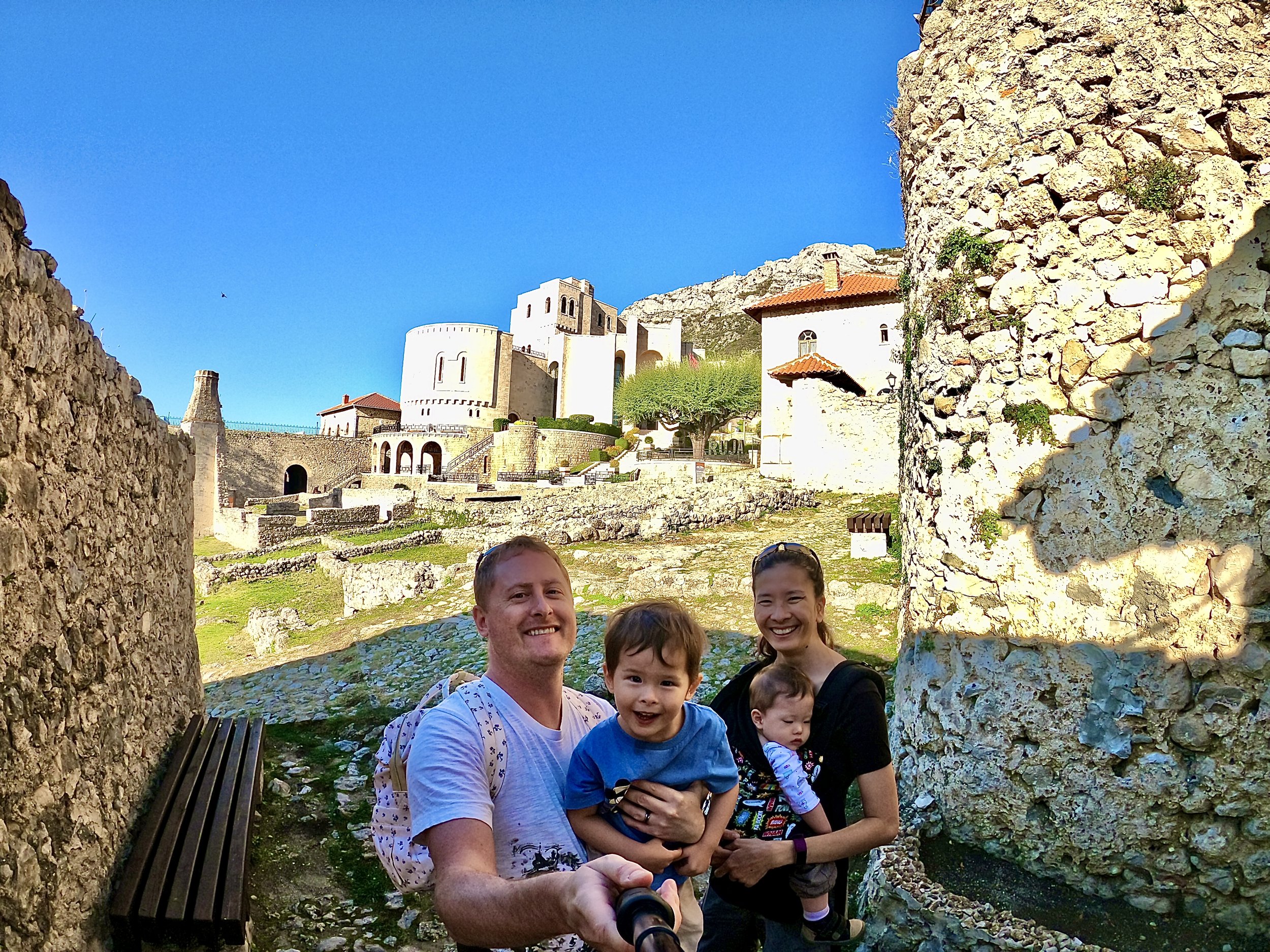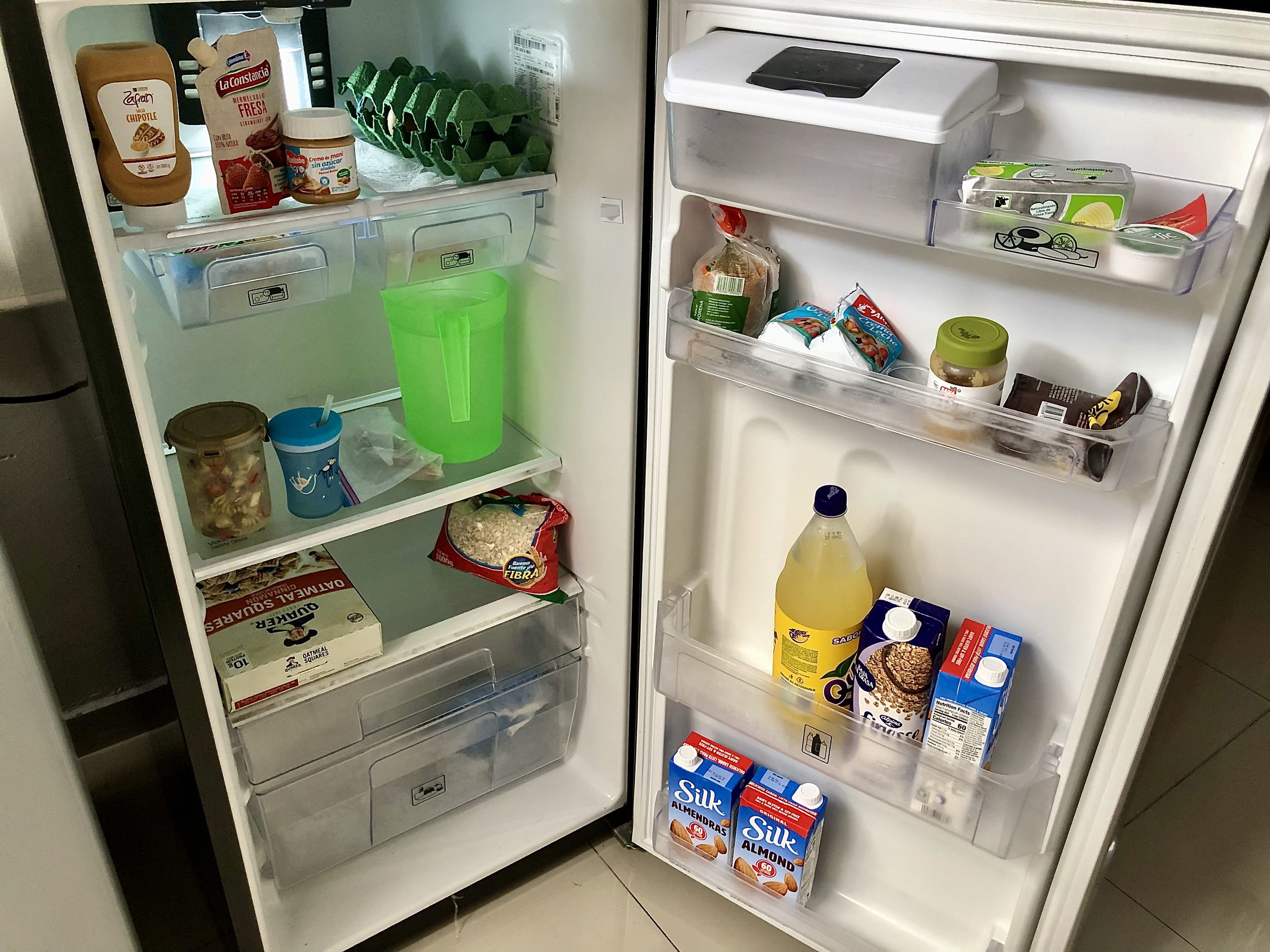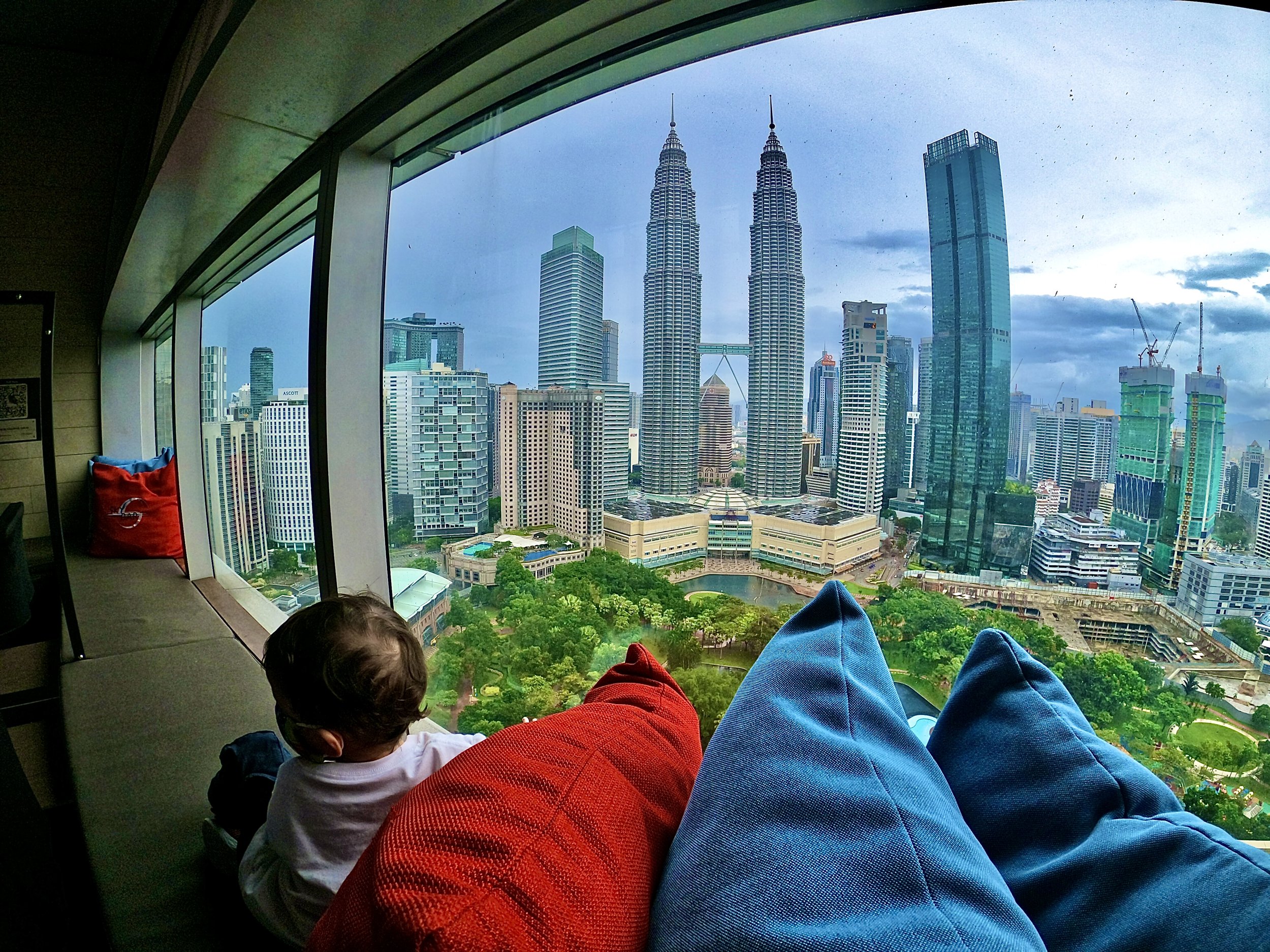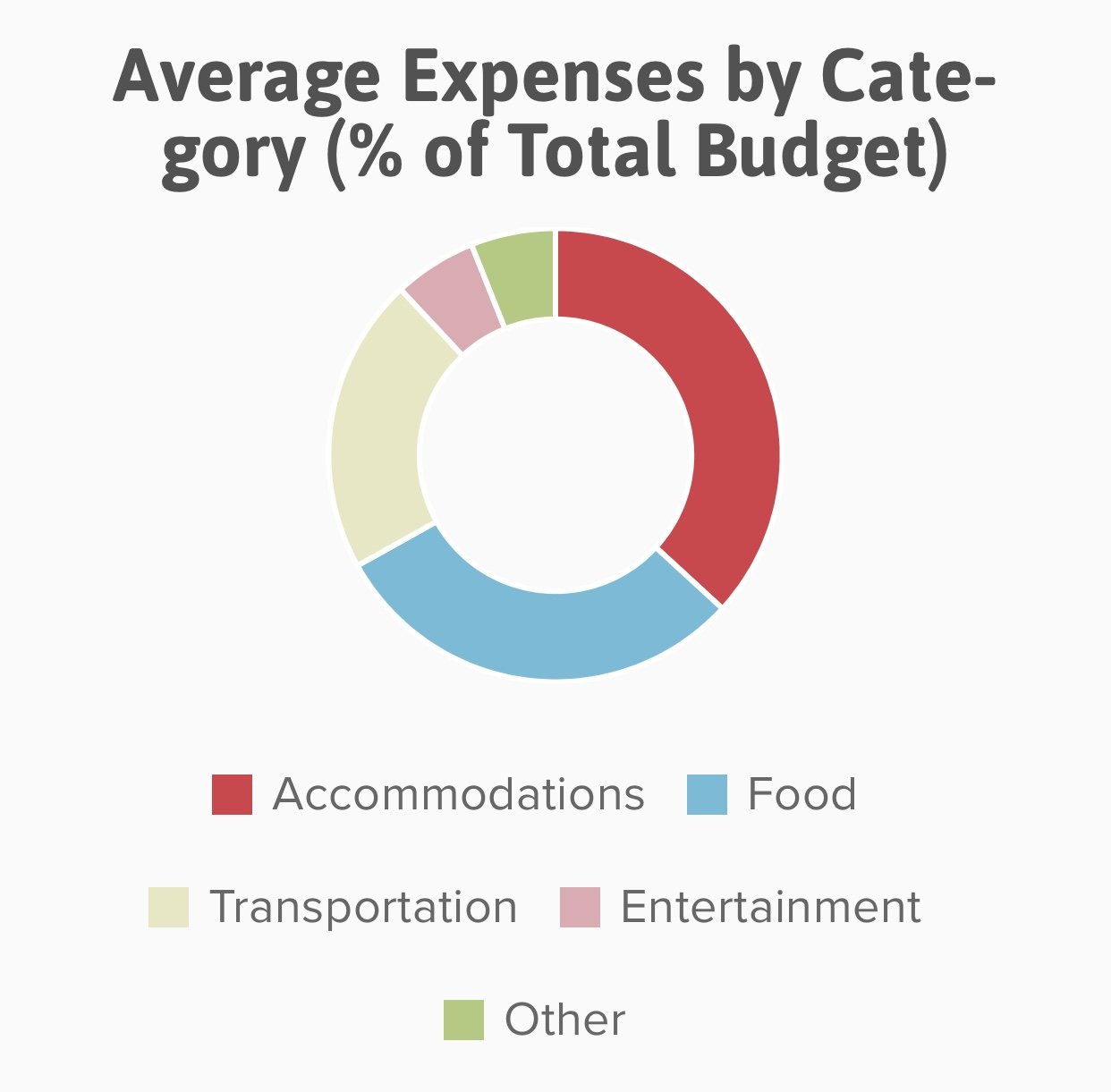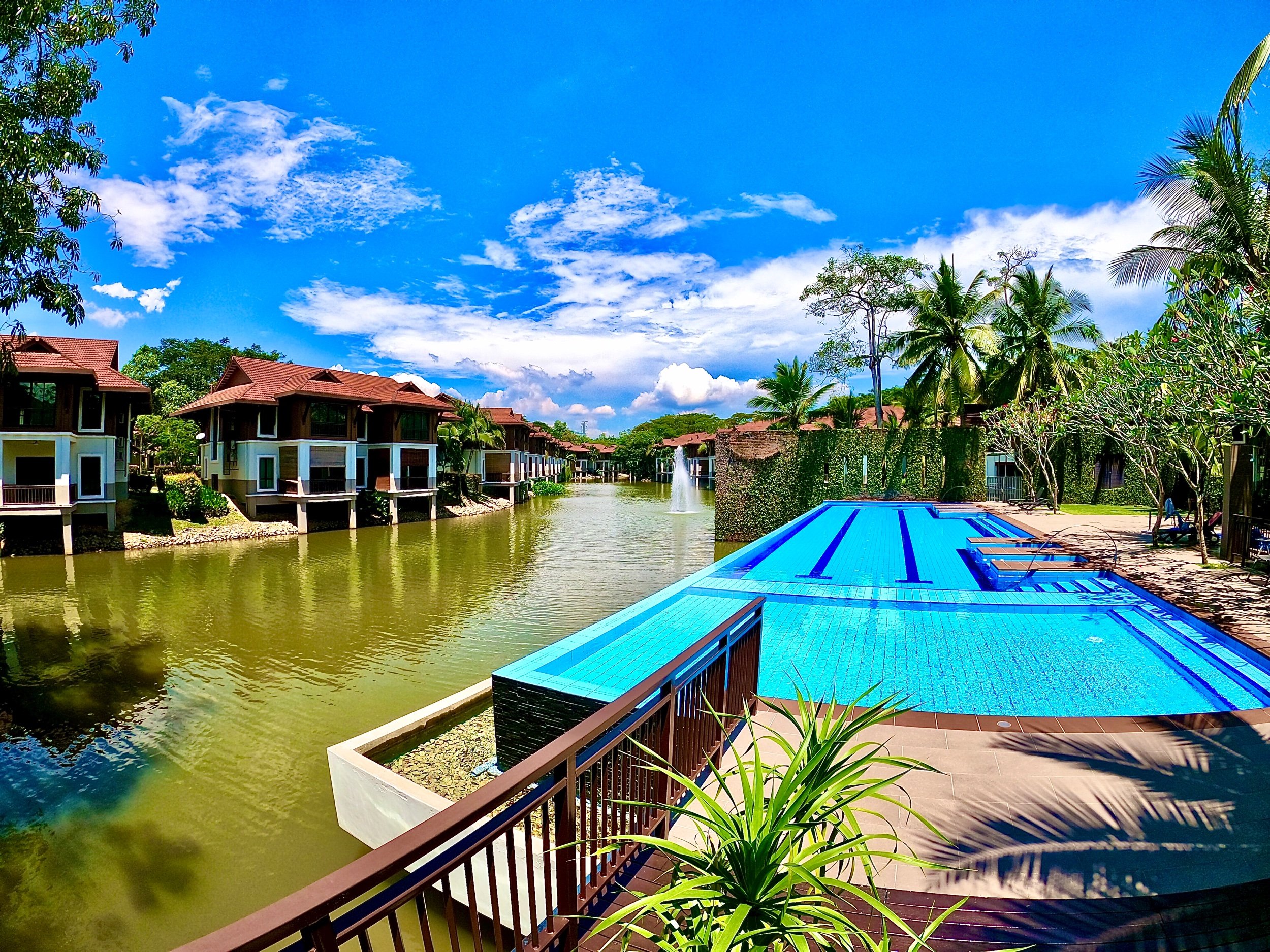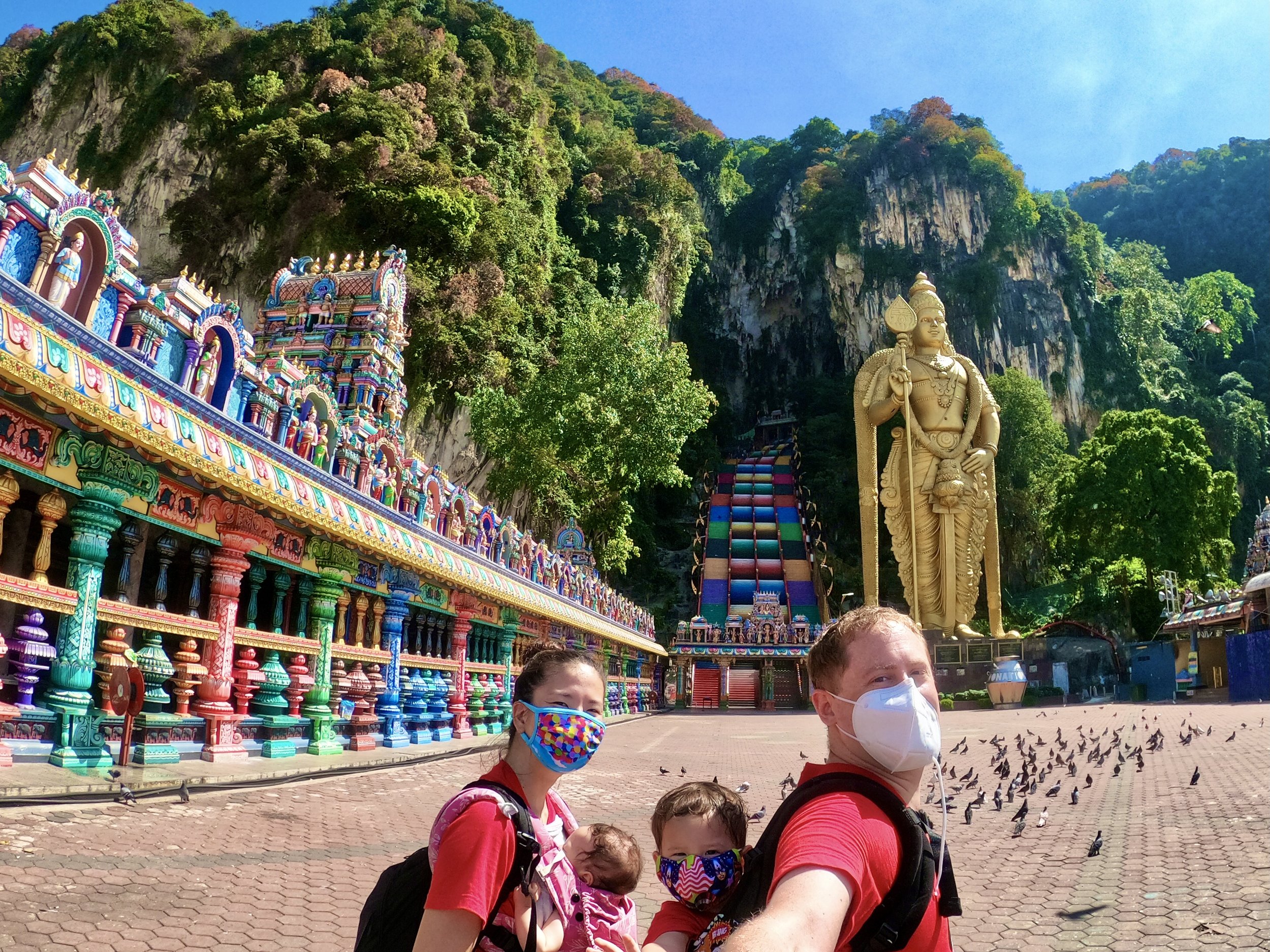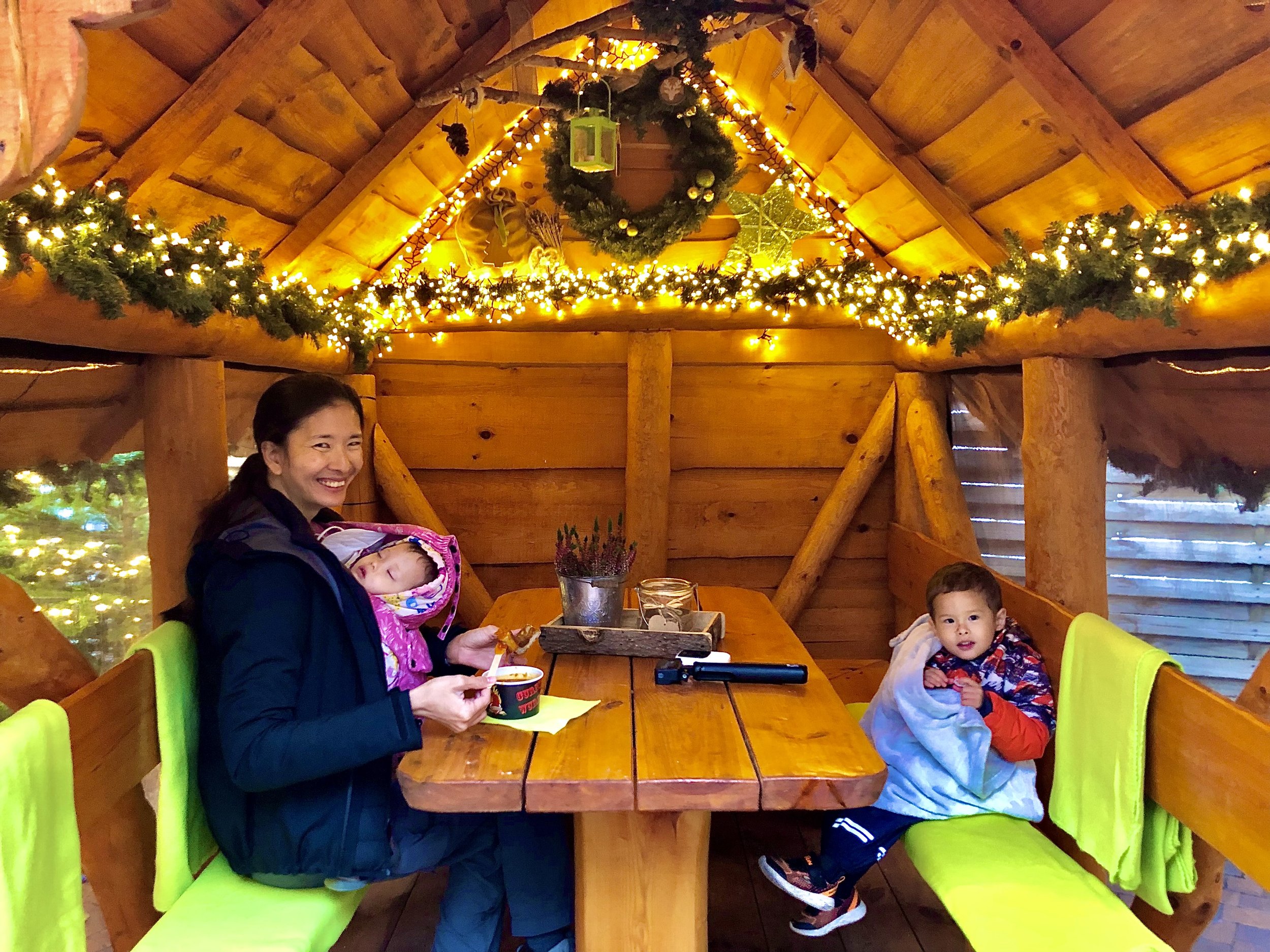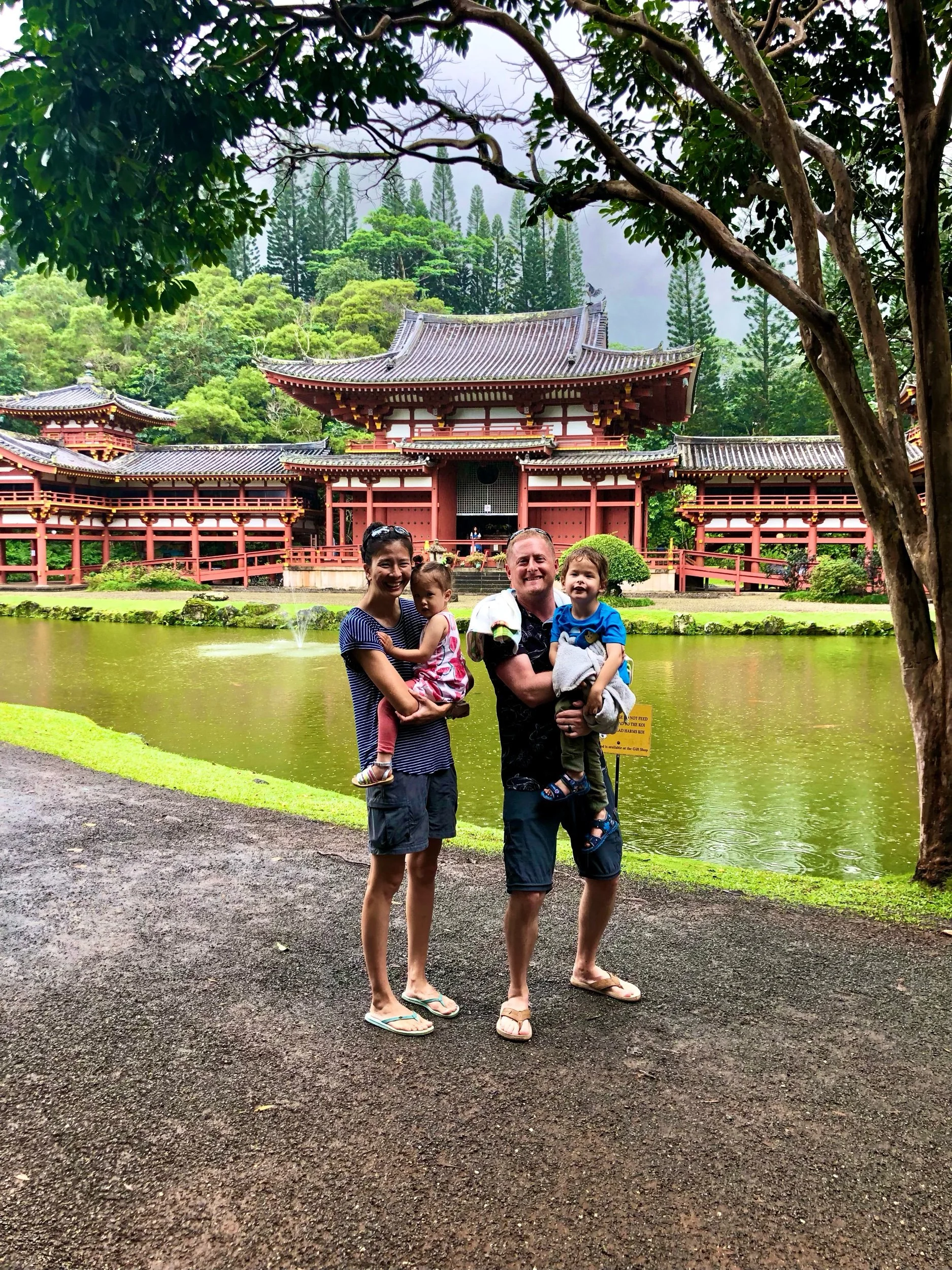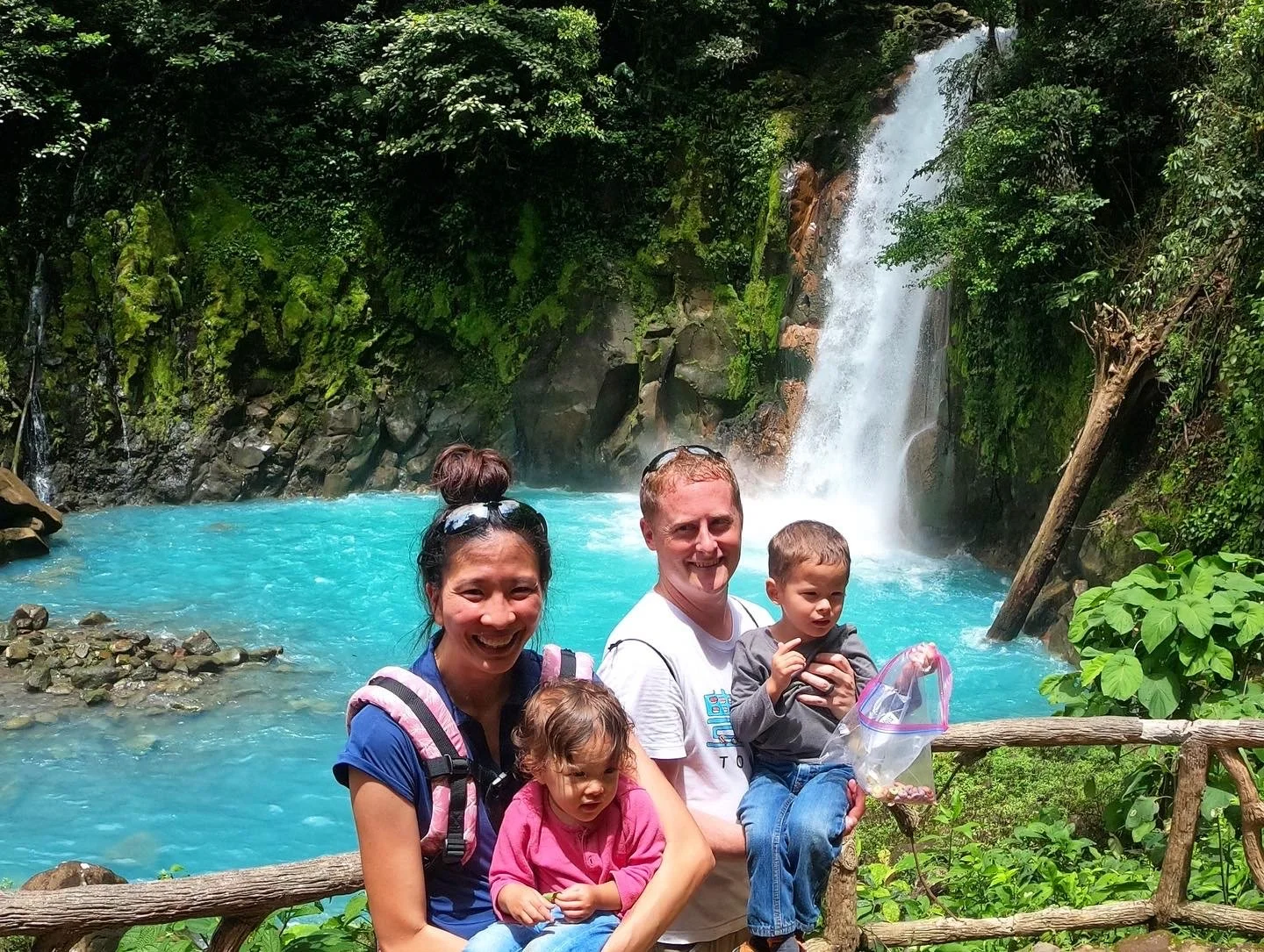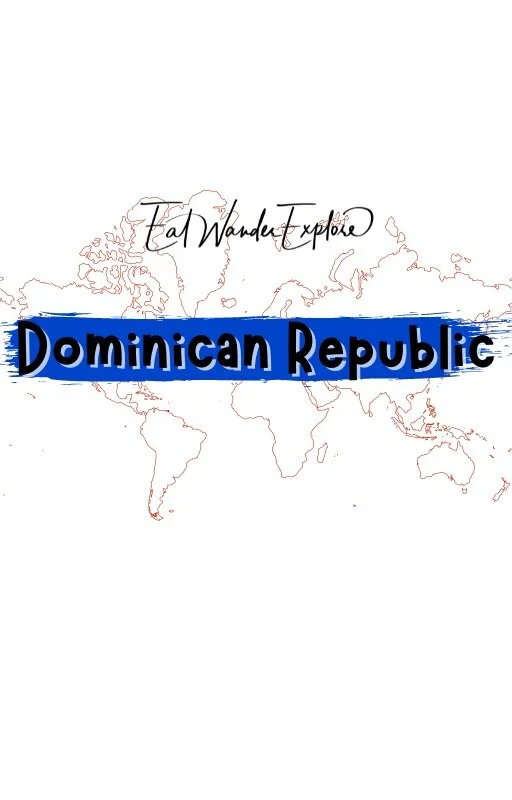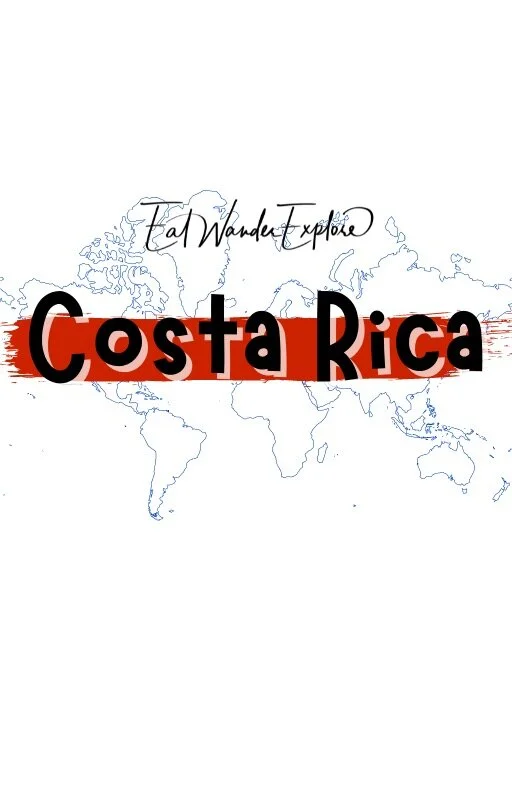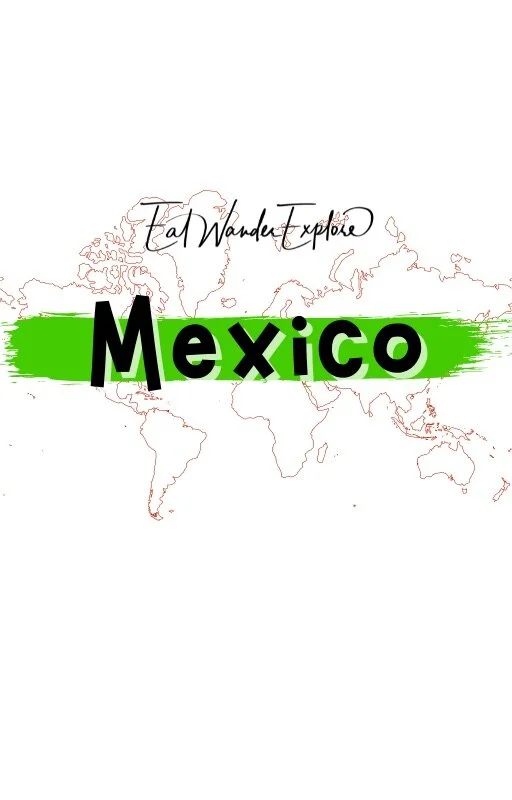How to Live a Traveling Lifestyle - The Remote Work Lifestyle
Please note: This post may contain affiliate links. See our disclosure to learn more.
The Remote Work Traveling Lifestyle
Many people fantasize about traveling the world, but few ever take the leap to actually do it. However, with many jobs these days offering the remote work lifestyle as an option - the ability to work online 100 percent of the time - and with the abundant availability of ways that people can work abroad or set up their own gig completely online (see the Nomad Guide for more info), it is now likely that it is more of a real option for you than it used to be.
So, you may now be wondering how to live a traveling lifestyle and what is this lifestyle actually like? Well, as it turns out, we’ve been doing it now for over 4 years continuously and we’re going to answer all of your questions!
Endlessly Learning to be Minimalist
When you start traveling you are going to bring too many things. I don’t know anybody that started out with the bare essentials - everyone always packs at least twice as much as they needed, plus a bunch of stuff they almost never need. Let’s be honest, you probably think that you need to bring more than 2 pairs of shoes because you might need boots for one thing, walking shoes for another, and flip flops for the beach. Maybe you also need some dressy shoes for going out too, right? No, you seriously don’t.
I know it’s not as flashy as bringing the perfect attire everywhere you go, but when you realize that every bag of luggage not only costs $40-$60 more to bring along, and also that it is a pain in the butt to fit all of that luggage in a vehicle and carry it around with you everywhere you go, you will soon decide that being practical is the way to go. We ended up with a classy looking pair of trail runners and a pair of flip flops. The trail runners are fine for most types of hiking that we do and also great for walking for long periods of times. They aren’t too bad for dressing up either. As for the flip flops, we wear them when it’s simply too hot outside or when we’re going to the beach - plus they are super comfortable to walk in with their yoga mat feel.
When we started traveling we were just a cute couple with one carry-on sized luggage and a decent sized backpack each. That was honestly too much. We downsized to only have 1 carry-on sized luggage between the both of us, and still tried to reduce. However, when our son was born, we ended up trading in that carry-on sized luggage for 2 full-sized large pieces of luggage as we needed to carry around baby things. Plus a car seat. Eventually, we were able to reduce that to 1 full-sized large piece of luggage (yes, the backpacks came along as well). Then, our daughter was born abroad as well, and we were back up to 2 full-sized pieces of luggage, 2 car seats, a stroller, and the 2 backpacks. It was a nightmare to travel with (read about that here), but we learned how to reduce once again - unloading the car seats in place of child safety vests.
Learning to be minimalist while you’re traveling is not a thing you’ll feel like you’re an expert at. It’s a constant learning process as your life changes along the way - and you’ll never stop learning. But some things you will learn never to bring with you, like the things you’ll only need once per year, or any amount of food (other than a few snacks for the kids), or any amount of shampoo or body wash (maybe the travel sized ones if arriving late), or tubes of toothpaste, or sunscreen, or any more than a couple days worth of diapers, etc. because you can always pick up those things at the store once you arrive. It is pointless to bring all of that with as it’ll cost you $40-$60 extra for the bag on the airplane, carry it through the airport, and you’ll have to figure out how to fit it in your car or taxi - you’ll be exhausted with so much luggage - all over a bag full of stuff that likely would have cost you only $30-$40 to completely replace anyway. It’s just not worth it.
Your Media Collection Becomes Solely Digital
If you’re up to date with the times, you’ve already converted to 100 percent digital media anyway. If not, you’re trying to figure out if you need to keep all of those CDs and DVDs that you bought over the years. Do yourself a favor and use Hulu’s Disc to Digital, or some other program, to completely rid yourself of physical media. You seriously cannot carry that stuff around with you.
We’ve adapted to having our movies connected through an app called “Movies Anywhere” which connects Google movies, Hulu movies, Amazon movies, Disney movies, and Apple movies all in one place - then, even if you don’t use that app, you can view all of your movies from ANY of those places in whatever app you open. For example, we don’t even use the Movies Anywhere app to watch movies, we just open up the Apple movies or Amazon movies app and watch them that way.
As for music, you can save all of your albums to a portable hard drive or simply put them all into your digital library, perhaps through an app like Apple Music. If you have kids, we recommend having some noise-cancelling Airpods Pro’s - you’ll thank us later!
As for books, we know some of you are die-hard fans of physical books… and if you must carry one book with you at a time, that’ll likely be ok - but, exchange that one, or let it go, once you are done reading it. If you are doing only because digital screens give your eyes problems, then pick up a Paperwhite as they are built with “a flush-front design and 300 ppi glare-free display that reads like real paper, even in bright sunlight.” Honestly, you can have all of your books on one single device that will feel exactly like a book to your eyes, although not to your hands. If you don’t mind having a digital screen, just get a book reading app to carry even less.
Learning to Eat Everything
It may seem weird to think about this, but most people end up buying so much food, sauces, etc. that it ends up sitting in their pantry at home for months or years. In fact, you are very likely to have a few things in your refrigerator that are expired, and likely a lot more in your cabinets and pantries. Let’s assume that you decided to try to use it all up - everything that you have - by buying the very least amount of new items as possible. How long would it take you to use everything up? For most people, this would likely take months more than you think. For us, it might take a couple of days or a week at most.
You see, when you are constantly moving from one place to the next you’ll need to use up all of your food before you move on to the next place. Sure, you are likely to eat out on occasion, but after the first few months of traveling you are likely to live pretty similar to how you live now - cooking plenty of meals at home and only eating out on occasion. So, you are going to end up buying groceries.
You will learn to make those groceries very specific. Instead of having a shelf for pastas and a shelf for sauces, a shelf for canned foods and a shelf for boxed foods, a drawer full of spices and a drawer full of baking ingredients, you’ll likely learn to put all of the items for a single meal right next to each other in the same spot. You may end up having a shelf with a clear number of meals visible all at once - there is meal 1, there is meal 2, there is meal 3… so, you end up knowing exactly how many meals you have left for breakfast, lunch, and dinner.
This might seem strange right now, but when it comes down to the point where you’ll be leaving in 7 days, you’ll want to know that all of that food will be gone before those 7 days are up - otherwise you’ll have a lot of food that you’ll have to throw out before you leave. It just becomes second nature to you, and you almost never end up wasting food.
Researching Accommodations & Visas Regularly
Something that you likely don’t do right now is constantly look for a new place to live. You may have decided to move on occasion, but most people stick to the same place for most of their lives unless something forces them out. We happen to pick places for only about a month at a time, and when you start, you’ll likely be picking places every few days or weeks. This takes time, as you will learn, because if you don’t put in the time then you are likely to end up in a situation that you really don’t enjoy.
We now pick places for about a month at a time because it gives us a good amount of time to explore an area and doesn’t trap us in a place that might turn out worse than we expected. That rarely happens now because we’ve learned to look for places that have everything we want in advance - like a kitchen, wifi, a washer, and a dedicated workspace - before we even consider them. Then, we check out the pictures and the reviews just to be sure. Are there restaurants, grocery stores, or public transportation nearby? Those are fairly important as well, unless the delivery and taxi situation is amazing.
If you’re traveling solo, it might only take you a few hours to decide on a place. But, if you’re traveling as a couple, or with a friend, you’ll probably want to set aside about 1-2 days per month to plan this out. Some travelers like to just go-with-the-wind and see where it leads them, but you’ll find that this applies almost entirely to solo travelers as it will likely end up in arguments if one of you can’t stand the place that the other picked. Do yourself a favor and put in a little effort into this realm. With 2 kids now, we try our best to find a place with 3 rooms and 2 bathrooms as well… personal space (which I’ll talk about next) becomes a huge thing.
Additionally, how long are you planning to explore a single country? Many places might allow you to have a visa-on-arrival for up to 90 days, others will require that you fill out some type of pre-entry approval or obtain a visa prior to arriving. When we arrived in Thailand, we thought we would be able to stick around for 90 days, but they required us to go to the immigration office to renew our visa-on-arrival every 30 days - that wasn’t fun. Australia and New Zealand required a form to be filled out, which did cost money, even though it wasn’t considered a visa. Still other countries, especially in Latin America, allow stays of up to 180 days without any pre-approval. A few require an onward ticket to show that you’re leaving the country in time while others might or might not ask you simply to tell them how long you plan to stay upon going through customs. Don’t pick a number that’s larger than they allow!
Either way, you’ll get used to looking up places and looking up visas. Plus, you’ll likely get really good at researching weather, public transportation methods, food delivery, and grocery delivery apps as well.
Finding Down Time to Relax or Work
If you’re traveling with other people, like your husband or wife, like your children or your friends, or maybe your parents, you will likely end up being together with those people 24 hours a day 7 days a week… forever! You probably aren’t used to that at all - for example - if you go to work during the day at a place that isn’t your own home. That 8-10 hour period of going to work is unlike this lifestyle, as it does - in fact - give you some time away from those people and enough time to recover from constantly being around them.
Sure you will eventually learn how to co-exist on a 24 hour 7 day per week schedule, but the truth is that. you’ll also learn how to lock yourself in a room, go find a coworking space, or simply agree to take turns watching the kids while the other goes off to enjoy a day to themselves or get some work done. Honestly, if you aren’t scheduling in some personal time, you’re likely going to melt down at some point.
Our schedule looks something like this: I work 2 days per week, my spouse works 1 day per week. We also plan 1 flex-day per week to simply relax and play with the kids, or run errands if needed, or do some planning on where we are going next. Then, we spend 1 day per week to go out and explore as a family. That is 5 days. The other 2 days are personal days - 1 for me and 1 for my spouse. We can use them to relax, to work, or to explore - whatever we decide, on our own, that we want for that day. Can you use it as another family day? Sure, that’s your choice if it’s your day - but it is important to know that you can choose whatever you need because your needs are constantly changing.
Living with other people constantly is a different animal, and you’ll need to learn how to adapt to that for it to work long term.
You’ll Become Great at Budgeting
If you aren’t already great at budgeting, you’ll learn how to do that along the way. If you don’t, it’s very unlikely that you’ll be able to continue doing it forever. Most people that I’ve known that simply decide to go on a personal adventure for 6-12 months end up returning home in 3 months simply because they ran out of money. Let’s get this straight from the beginning: if you think the traveling lifestyle is a constant vacation then it will end sooner than you expect.
The traveling lifestyle is much like the normal lifestyle - you wake up in the morning, you eat, you go to work, you come home, you eat again, do the dishes, do some laundry, and - if you’re lucky - you’ll take some time to relax and watch some Netflix or something, and then go to sleep. If you don’t have kids, you might go to party for the night instead of staying in. A couple of days per week you’ll have the day off and you’ll go do something fun, go shopping, or get something done that you really need to do. The traveling lifestyle isn’t much different - apart from the fact that you’ll be waking up in a different place or country on a regular basis and that you’ll be going out and enjoying new things for the rest of your life instead of doing the same things every weekend.
If you’re living as if you were on a vacation, completely care-free without working, you’ll find that you’ll run out of money very quickly as you’ll be spending money every single day on vacation-worthy experiences. Lesson number one if you want to live a traveling lifestyle is to ask yourself how long it’ll take to explore the things you want to explore. If the answer is 8 days, then you’ll want to stay there for 4 weeks as you’ll only get 2 days off per week.
Lesson number 2 is to make sure that you only spend a certain amount on your accommodations, transportation, food, entertainment, and living essentials on a regular basis. We have a public budget that we stick to, and try to keep our accommodations costs relatively the same every single month. If our airfare was really expensive, then we’ll try to stay longer in that location to break up that cost over a few months to average it out. If we’ve been spending too much on food, we try to cook food at home more frequently. If our entertainment costs are too high we’ll look for free or cheap things to do instead. If one country is expensive to live in, then we try to balance that out by living in cheaper countries as well. It’s all in our long-term planning article.
It is a pain in the butt to keep a constant budget, but there is a trick: create a separate checking account for your monthly budget and then only move enough money into that account for that month. If you want to spend more, then spend less the month before. If you’ve overspent, then move in less the next month (as you’ve borrowed from that month). Try never to borrow from next month. If you don’t get good at this then your “vacation” will end sooner than you think and you’ll have given up on living a traveling lifestyle.
If you really learn the lifestyle, you’ll figure out how to search for the cheapest airfare, find the best accommodations at the lowest cost, and find a balance between things like restaurants and groceries, and expensive experiences and free experiences. Read the summaries under the bi-annual budgets on our budget page for more information.
An Amazing Lifestyle
Despite having to learn how to live a traveling lifestyle from scratch, it is completely worth the effort. We’ve traveled to 6 of the 7 different continents (not yet to Antarctica) and explored many different countries. The life changes have been incredible - meeting new people, experiencing new cultures, seeing unique places, trying amazing new foods… there have just been an endless amount of new things that have kept life super interesting. Here are some of our favorite destinations:
See all of the places we’ve been on “Our Travel Story” page
We think on occasion that it would be easier to go back home, get a regular job, and just relax… but, when we really think about it, we would need to buy a car to get around, we’d need to lock ourselves down into a year-long lease or buy a house, we wouldn’t get to spend so much time with our kids, etc. It really would be hard to transition back at this point… especially now that we know that it’s so cheap to live the traveling lifestyle (for us it’s been between $2,000 to $2,500 per month as an entire family - all expenses included) - so much cheaper than if we were to stay in the United States.
Once you get used to it you may never want to give it up!
FAQ’s
How does one manage healthcare and insurance while living a traveling lifestyle?
Navigating healthcare and insurance while traveling can be complex, but it's manageable with proper planning. Travelers often opt for international health insurance plans that provide coverage worldwide. These plans are designed for long-term travelers and expats, covering a range of medical services. It's crucial to compare policies to find one that fits your travel plans and health needs. Additionally, some countries offer reciprocal healthcare agreements, allowing travelers to access medical services at a reduced cost or for free.
What strategies can be employed to maintain strong relationships with friends and family back home?
Maintaining relationships while traveling requires effort and technology. Regular video calls, social media updates, and collaborative online activities can keep connections alive. Setting up a schedule for communication helps manage different time zones. Sharing experiences through blogs or photo albums also allows loved ones to feel involved in the traveler's journey.
How can one ensure consistent income while embracing a remote work lifestyle?
To ensure a consistent income, remote workers should diversify their income streams. This could involve freelancing, remote employment, or running an online business. We typically recommend learning how to code prior to setting out as most high-paying remote work is in the programming field (see https://remotecoding.dev for more info). Building a strong professional network and maintaining an updated portfolio is essential. Additionally, financial planning, such as setting aside savings and investing, can provide a safety net for periods of unstable income.
(1) How to Live a Traveling Lifestyle - The Remote Work Lifestyle. https://eatwanderexplore.com/start-traveling-blog/how-to-live-a-traveling-lifestyle-the-remote-work-lifestyle.
(2) REmotiFIRE by EatWanderExplore Remote Lifestyle & Online Coding Bootcamp. https://eatwanderexplore.com/.
(3) How to travel and work remotely? A guide for location independence. https://www.worldpackers.com/articles/how-to-work-and-travel.
Thank you VERY much for reading our article. We actually created this website to help people reach financial independence. Did you know that by having a remote job and traveling endlessly, or living in a country that has low costs of living, you can actually reach retirement quicker? Plus, retirement abroad is up to 75 percent cheaper as well! Learn more by exploring our website: EatWanderExplore and REmotiFIRE.
See our Thank You page to sign up for our free weekly newsletter - you’ll receive only 1 email per week letting you know about our latest travel articles, remote-work life, and amazingly affordable destinations!
Found this post useful? Buy us a coffee to help support this site’s running costs OR share this article with a friend.

